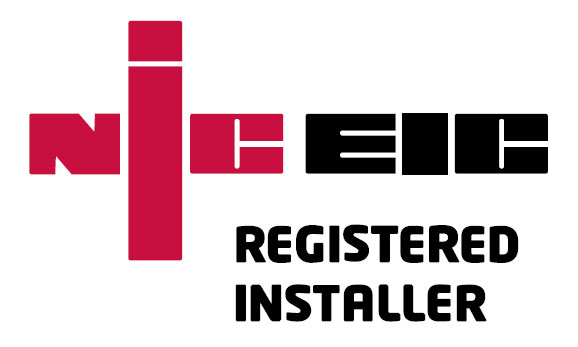When you think about ventilation, you normally picture extractor fans sucking stale air from bathrooms. They’re cheap, noisy, and normally only run while the light’s on. But when you suck air from a building, the air you remove has to be replaced. So what happens if the replacement air is more harmful than the air it’s replacing? You could be fixing one problem only to create another.
Without MVHR the only alternative is ‘extract-only’ ventilation. Whether that’s cheap intermittent extractor fans, centralised multi-room MEV’s, or eco-friendly (sounding) passive stack ventilation, they all rely on window ‘trickle vents’ to create an air path through the building. If you happen to close those vents to stop noise or draughts, none of those systems work properly. MVHR is the only ventilation that extracts and supplies air, so it’s the only system that can clean, warm, or cool the air it puts in.
In a typical family home, the combined ‘free area’ of all the trickle vents required is equivalent to leaving a window wide open on either side of the house, 24×7. Or put another way, it’s like leaving half a brick missing from every exterior wall in every room. Not ideal when you’re trying to create a healthy home, never mind an economical one.
The main advantage of MVHR is that it avoids trickle vents. You have it for health reasons first and foremost. Then after heat recovery, the main energy benefit is that it allows you to completely seal the building. Making it airtight stops it leaking, minimises demand, and that makes it ‘low energy’. Bingo!
Trickle vents offer no air filtration, so whatever dust, insects, pollen, or air pollution is present outside will soon be inside too. And at a rate faster than you think. Depending on the wind speed and direction, with trickle vents you get anything from no ventilation whatsoever, to ten times more than you need. Or zero to 5 Air Changes per Hour. Potentially the air you’re drawing in is more harmful than the air you’re removing too.
To put that into context, a 200 sqm family home with 2.4m high ceilings could have as much as 2,400 cubic metres of cold, damp, polluted air whistling through it on a windy day. Every hour! Try keeping that warm without breaking the bank.
The next reason you need MVHR is because it’s the only ventilation that filters the air you breathe.
Besides the air quality and draught issues, trickle vents let noise in from outside too, ruining the acoustic benefits of your expensive double or triple glazing. If air can get through so can sound. It doesn’t matter how impressive the windows are if you need to drill big holes in the frames in the name of ventilation. If you don’t want ‘flanking sound transmission‘ coming in from the neighbours, the road, or aircraft overhead, don’t have old fashioned trickle vents.
Modern eco-buildings are designed to be quiet, comfortable, and very energy efficient. There’s a good reason why MVHR is mandatory for a passive house or anything close, as well as Energy Saving Trust ‘Best Practice’. It’s fundamental for an ultra-low energy property.
MVHR is the only ventilation that stops flanking sound transmission.
With any other ventilation the temperature of the incoming air is the same as the temperature outside, whether that’s below freezing or above 35oC. If you don’t heat or cool the building that’s what temperature it eventually becomes. With MVHR the incoming air is around 90% of the temperature already inside during the cooler months, and that air is heated for free using energy that’s wasted with any other ventilation. Your boiler might only need to lift the indoor temperature from 19oC to 21oC instead of zero to 21. Now consider the amount of air you need to replace.
The minimum ventilation rate required for a domestic building is roughly equivalent to changing all of the air inside it every couple of hours. The boost ventilation rate required for hot stuffy weather, large indoor gatherings, or higher than normal levels of indoor pollution (decorating odours, burnt toast, etc) is normally 25% higher. The MVHR cooling boost is more than double, and if you have habitable rooms without opening windows like basements, or windows you can’t open for pollution, security, or noise reasons, the purge ventilation rate is ten times higher. In other words, even the minimum rate involves replacing an awful lot of air.





